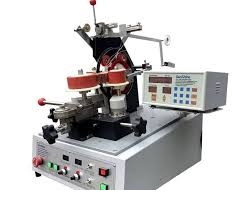The Evolution of Toroidal Transformer Winding Machines in the Industry

You might be wondering how the transformer industry has managed to keep pace with the increasing demand for efficiency and reliability in our electrical systems. Over the past few decades, the answer lies in the significant advancements of toroidal transformer winding machines. These machines are not just tools; they are crucial players in producing high-quality transformers, particularly current transformers. By exploring the evolution of these machines, we can gain insight into their vital role in shaping today’s technology and ensuring a stable electrical future.
From Manual to Machine: The Transformation Begins
A current transformer winding machine is specifically designed to create the windings for toroidal transformers. These transformers are shaped like donuts and are known for their efficiency and compact size. The toroidal design allows for better magnetic coupling, which reduces losses and improves performance.
The Dawn of Automation
In the past, winding transformers was a manual and time-consuming process. Operators used to wind the coils by hand, which led to inconsistencies in quality. As the demand for more reliable and efficient transformers grew, manufacturers started looking for ways to automate the winding process.
Tech Upgrades: The Future is Now
Toroidal transformer winding machines have evolved significantly. Early models were basic, but modern machines now use computer technology to program winding patterns and adjust speeds automatically, speeding up production and ensuring uniformity.
Features That Define Modern Marvels
- Programmability: Today’s machines can be programmed for different winding styles. This flexibility allows manufacturers to switch between products easily.
- Speed and Efficiency: Advanced motors and gears have increased the speed of winding. Machines can produce more transformers in less time without sacrificing quality.
- Precision: Modern machines come equipped with sensors that monitor the winding process. These sensors help maintain consistent tension and alignment, leading to better quality transformers.
- User-Friendly Interfaces: Newer models often have touchscreen controls, making them easier to operate. This helps workers learn the machines quickly and reduces errors.
- Safety Features: Modern machines are designed with safety in mind. They include emergency shut-off switches and guards to protect operators from injury.
Sparking Change: The Impact on Industries
The evolution of current transformer winding technology has had a profound impact on various industries. For instance, in the power sector, these machines help produce transformers that can handle higher loads efficiently. As a result, electrical systems become more reliable, benefiting both consumers and industries.
Glimpsing the Horizon: What’s Next?
As technology continues to advance, we can expect further improvements in toroidal transformer winding machines. Innovations like artificial intelligence and machine learning may soon play a role in optimising the winding process even more. These advancements will likely lead to even greater efficiency and reduced costs in transformer manufacturing.
Final Summary: Celebrating Innovation in Action
The evolution of toroidal transformer winding machines highlights the importance of innovation in manufacturing. As the industry continues to grow, these machines will play a critical role in meeting the increasing demand for reliable transformers. Understanding this evolution helps us appreciate the technology that powers our modern world.










